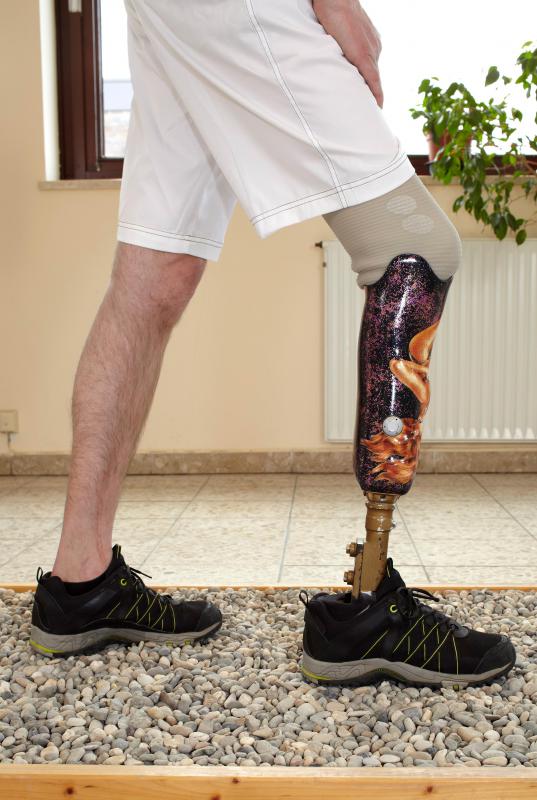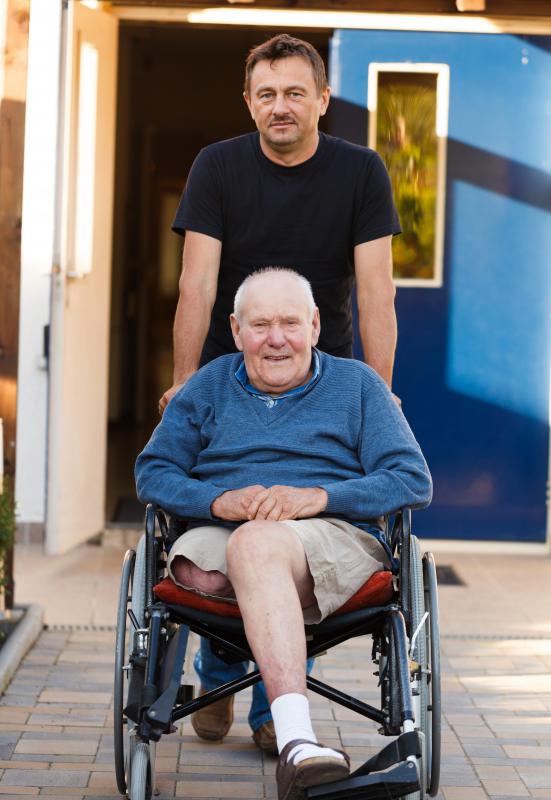At WiseGEEK, we're committed to delivering accurate, trustworthy information. Our expert-authored content is rigorously fact-checked and sourced from credible authorities. Discover how we uphold the highest standards in providing you with reliable knowledge.
What is a Prosthesis?
A prosthesis is a replacement for a missing body part. People most commonly associate prostheses with missing arms and legs, but the term is also used to refer to internal devices such as heart valves, as well as prosthetic eyes and other body parts. The intention behind a prosthesis is to improve the quality of life for the wearer, while also giving the person more freedom and independence. The word comes from a Greek word, prostithenai, which means “to add to.”
Archaeological evidence suggests that prostheses have been around for a very long time. Early examples of artificial limbs made from wood and various metals have been found in digs dating as far back as 300 BCE. In addition, the concept of artificial limbs and missing body parts is included in the mythology of some cultures. Early prosthetic limbs were heavy, cumbersome, and probably uncomfortable to wear. A modern prosthesis is much more lightweight, and is designed to bring functionality into the life of the wearer.

Several steps are involved in the making and fitting of a prosthesis. Each prosthesis is custom made for the individual wearer, to ensure a snug fit and an accurate length. First, the patient must be allowed to recover completely from the incident which caused him or her to need a prosthesis in the first place. Accidents and disease are two common reasons for amputation, and the site must be allowed to heal before fitting for a prosthesis begins.

While the site is healing, the patient talks with his or her doctors and a prosthetic specialist about what he or she wants. In the case of internal prostheses, the discussion is primarily focused on different available designs and how they work. Choices for external prostheses get more complicated, and they can get expensive. An external prosthesis can be made extremely realistic, or very basic, or extremely high tech and functional. Some amputees prefer artificial limbs which mimic real ones, concealing their amputation, while others place a higher value on lightweight basic prostheses, and others want something which mimics the real life function of a limb with the assistance of computer chips and smart technology.

Artificial extremities are worn in a number of ways. Many attach to the stump using suction, while others strap or buckle on. Once the patient learns to wear the prosthesis comfortably, he or she can learn how to use it. With artificial legs, this essentially requires learning how to walk again, whether he or she is using a computerized prosthesis which assists with walking, or a more basic artificial leg. Artificial arms and hands require a great deal of work as well, since ideally the prosthesis will restore functionality to the arm. Patients can choose from a variety of designs including simple hooks with cables which control them and myoelectric hands which respond to the electrical impulses in the muscles of the arm.
Advances in prostheses are constantly being made, with many amputees actively participating in the design and manufacture of better prostheses. Some organizations also focus on getting basic prostheses to people of low income, and people in developing nations who have experienced amputations.
AS FEATURED ON:
AS FEATURED ON:













Discussion Comments
One matter you have not included is that of "gangrenous teeth."
After "amputation" (extraction) the replacement may be done with a prosthesis. Various forms are offered: Implants, Traditional fixed bridges with mutilation of teeth, removable bridges (partial dentures) and now the Carlson Bridge(r) "Winged Pontic" tooth replacement system.
Post your comments